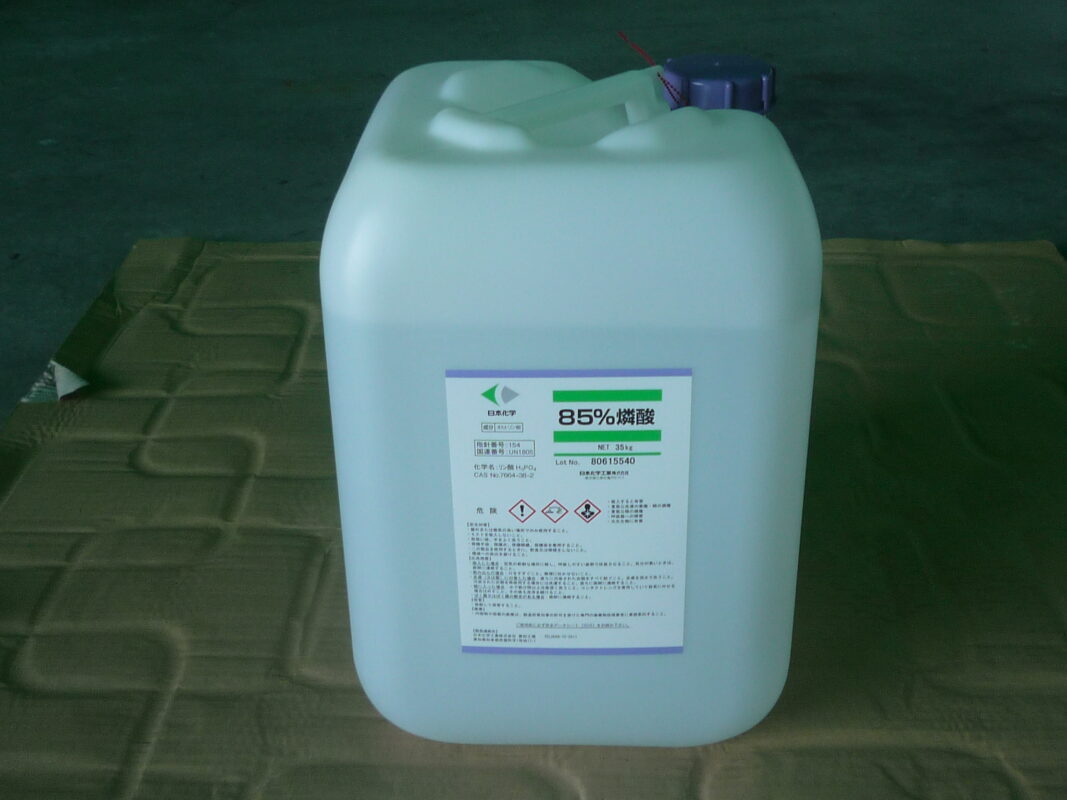Blog
Phosphoric Acid SDS – Safety, Handling, and Guidelines
Phosphoric acid SDS is essential for understanding how to safely handle and store this widely used chemical. Whether you work in manufacturing, agriculture, or another industry, the phosphoric acid SDS offers crucial information on its properties, hazards, and safety measures. This guide will cover all aspects of phosphoric acid SDS, including safety protocols and proper handling.
What is Phosphoric Acid?
Phosphoric acid, also known as orthophosphoric acid, is a mineral acid commonly used in various industries such as food processing, fertilizers, and cleaning agents. It has a chemical formula of H₃PO₄ and is often used to lower pH levels or to clean metals.
Importance of Phosphoric Acid SDS
Phosphoric acid SDS (Safety Data Sheet) is an essential document that provides detailed information about the chemical’s potential hazards, safety protocols, and first-aid measures. Understanding the phosphoric acid SDS is critical for ensuring the safe handling and storage of the substance, as it outlines crucial safety guidelines for both personal and environmental protection.
Why Do You Need Phosphoric Acid SDS?
The phosphoric acid SDS offers information on potential hazards like skin and eye irritation, and it also details how to handle accidents, including spills or ingestion. Workers and industries dealing with phosphoric acid must have access to its SDS to minimize the risk of exposure or injury.

Key Components of Phosphoric Acid SDS
1. Identification of the Substance
The phosphoric acid SDS provides the chemical name, synonyms, and relevant uses. This helps identify the exact chemical composition and its applications across industries.
2. Hazards Identification
This section outlines the physical and chemical hazards associated with phosphoric acid. It is important to be aware of potential risks like skin burns, respiratory irritation, and eye damage.
3. First-Aid Measures
The phosphoric acid SDS includes detailed first-aid instructions for different types of exposure, such as inhalation, ingestion, or skin contact. In case of exposure, following these guidelines can prevent further injury and ensure proper care.
4. Firefighting Measures
Although phosphoric is not flammable, the SDS contains crucial information about the type of fire extinguishing equipment to use if the chemical is involved in a fire.
5. Accidental Release Measures
The SDS outlines the steps to take in case of a spill or leak. These steps include proper containment, cleaning procedures, and environmental precautions to avoid contamination.
6. Handling and Storage
Phosphoric SDS provides guidelines on how to store and handle the chemical safely. This includes temperature control, ventilation requirements, and protective measures to avoid contact with incompatible substances.
7. Exposure Controls and Personal Protection
This section explains the necessary personal protective equipment (PPE) for those working with phosphoric acid. It includes recommendations for gloves, goggles, and respiratory protection.
8. Physical and Chemical Properties
The phosphoric SDS lists physical properties such as appearance, pH, boiling point, and solubility. These properties help workers recognize the chemical and understand how it behaves under various conditions.
Phosphoric Acid SDS Safety Precautions
1. Personal Protection
Always wear appropriate protective clothing when handling phosphoric acid. This includes safety goggles, gloves, and chemical-resistant clothing to prevent skin contact or eye exposure.
2. Safe Storage
Phosphoric acid should be stored in a cool, dry place away from incompatible chemicals such as strong alkalis or oxidizers. The storage area must be well-ventilated and secured to prevent spills or leaks.
3. Handling Spills
In case of a spill, the phosphoric SDS advises using absorbent materials such as sand or vermiculite. Ensure proper ventilation and avoid contact with the spilled substance. Use PPE and follow local regulations for waste disposal.
4. Fire Safety
Even though phosphoric is non-flammable, the SDS outlines that in the event of a fire involving the chemical, you should use dry powder or carbon dioxide extinguishers. Avoid using water as it may create corrosive fumes.
Environmental Considerations in Phosphoric Acid SDS
1. Environmental Impact
Phosphoric acid can have harmful effects on the environment if not handled properly. The phosphoric SDS advises avoiding release into water sources or soil, as it can lead to ecological damage.
2. Disposal Guidelines
Proper disposal of phosphoric acid is crucial to minimize environmental harm. The SDS provides detailed disposal instructions in accordance with local, state, and federal regulations.
First-Aid Measures in Phosphoric Acid SDS
1. Eye Contact
In case of eye contact with phosphoric acid, immediately flush the eyes with plenty of water for at least 15 minutes. Seek medical attention if irritation persists.
2. Skin Contact
If phosphoric acid comes into contact with the skin, wash the area thoroughly with soap and water. Remove any contaminated clothing and seek medical advice if irritation develops.
3. Inhalation
Move the person to fresh air immediately if phosphoric acid is inhaled. In severe cases, seek medical attention for respiratory issues.
4. Ingestion
If phosphoric acid is ingested, rinse the mouth thoroughly with water but do not induce vomiting. Contact a medical professional immediately for further assistance.
The Importance of Proper Training
Anyone who handles phosphoric should undergo thorough training to understand the risks and necessary precautions outlined in the phosphoric SDS. This training should cover all aspects of safety, including the correct use of PPE, proper handling techniques, and emergency response measures.
Conclusion
Phosphoric SDS is an indispensable resource for anyone handling this chemical. It provides essential safety information, including hazard identification, handling instructions, and first-aid measures. Understanding and following the guidelines in the SDS is crucial to ensuring safe and responsible use of phosphoric.
